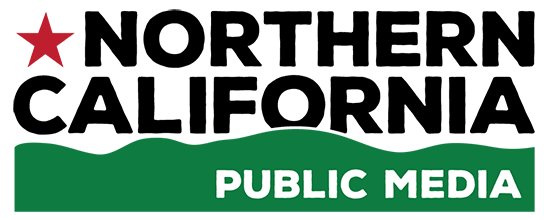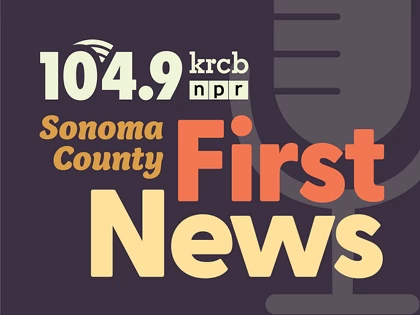 photo credit: Marc Albert/KRCB
photo credit: Marc Albert/KRCBCash to help authorities bring balance to aquifers.
Scientists and technicians will be keeping a close and detailed watch on something not easily seen from the surface---the amount of water beneath Sonoma County.
That's a critically important source with California's fickle rainy season. Unlike other NorCal counties, none of the county's water comes from snowmelt. It's all dependent on rain filling up Its rivers...reservoirs: Lake Mendocino and Lake Sonoma...and seeping underground.
On Monday state officials handed giant novelty checks clocking in just above fifteen million dollars to representatives of Sonoma county's three groundwater basins.
The money will pay for an aquifer census, of sorts.
And create plans assuring groundwater remains flush half a century from now.
Andy Rodgers, with the Santa Rosa Plain Groundwater Sustainability Agency...known as a "G-S-A," explained what the money will be used for.
"A lot of things is the short answer. It's anywhere from filling scientific data gaps, its to engage the public like being part of the monitoring of the groundwater basin, it's to install wells around the basins so we can monitor more effectively, and I could probably list ten more things," Rodgers said.
Despite the influx of state cash, the money won't reduce charges the county is rolling out for those on wells. In fact, Rodgers says those are likely to rise.
Supervisor Susan Gorin agreed. That's because currently, the GSAs are subsidized by the state, but won't be forever.
While higher fees may generate complaints, Gorin says she has a partial solution in mind....eliminate large differences in what each of the county's three groundwater sustainability agencies charges per acre-foot.
"There is great disparity, so how can we look at equalizing those rates, how we can consolidate the three agencies together to have one agency," Gorin said.
Each groundwater basin is unique and faces unique challenges. That's according to Andrea Rodriguez, spokesperson for Sonoma County Water Agency.
Sonoma Valley basin is near the bay, so infiltration by sea water is a serious issue. Santa Rosa Plain comes through Sebastopol. It's a little bit more urban, but it also has wells around it. Petaluma Valley contains some agricultural users, but it also butts up against the city and rural residents.
One, low tech way to replenish groundwater involves flooding certain areas in the winter and letting the water seep into the ground where it will percolate down into aquifers below.
Another, engineered re-charge is roughly similar, but uses pumps to force water underground.
Supervisor David Rabbitt said the engineered recharge concept holds promise.
"I think in Sonoma County, that we have a real great opportunity to recharge the aquifer with quote unquote excess winter waters, bring that down, inject it into the aquifer where it can work the best... That water could then be pulled up in dryer summer months or get us through a little bit of a drought period."
Rodgers said more data to assure plans will actually work.
"We need to spend our resources as absolutely best as we possibly can--getting the highest bang for our buck"
That means more research and preparation. "It's more than just gathering data. We do need more data, but we also need to plan. And so, these are regional projects, they are big projects, and so doing the planning work is expensive and involving all the smart people that are involved in these basins, getting their ideas as part of the plans is going to be key to whatever project is going to be built," Rodgers said.
A main goal of the county: gaining participation from rural residents who draw drinking and irrigation water from wells. Plans call for new incentives for grey water systems and low-flow fixtures.

 Live Radio
Live Radio




